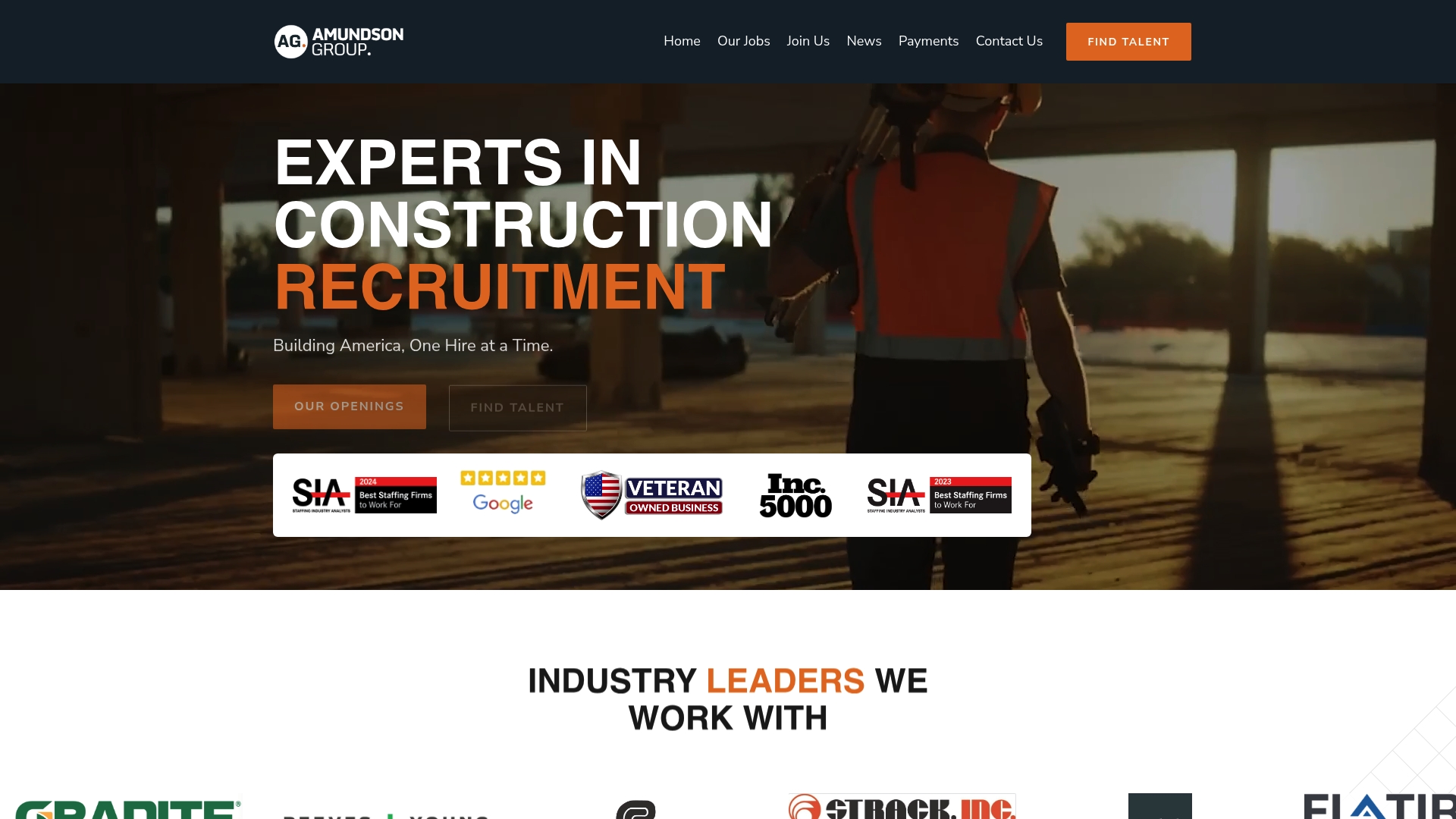Construction laborers are the unsung heroes of the building industry, tirelessly transforming designs into tangible structures that shape our communities. Astonishingly, despite their pivotal role, many overlook the immense opportunity this career offers. It’s not just about hard hats and heavy lifting; it’s a gateway to amazing salary potential and career growth. With the right skills and safety practices, you can elevate your future in this demanding yet rewarding field.
Essential Construction Laborer Guide: Skills, Safety, and Career Growth
Construction laborers form the backbone of every building project, providing the physical strength and practical skills that transform architectural plans into reality. Whether you’re considering entering this field or looking to advance your construction career, understanding the fundamental aspects of this role is crucial for success.
Core Skills for Construction Laborers
Successful construction laborers possess a blend of physical capabilities and technical knowledge. The physical demands of the job require stamina, strength, and dexterity as you’ll spend long hours lifting materials, operating equipment, and performing repetitive tasks. A construction laborer must be comfortable working in various weather conditions and physically demanding environments.
Beyond raw strength, technical competencies are increasingly important in modern construction. Basic measurement and math skills are essential for accurately following blueprints and specifications. Familiarity with common construction tools—from hammers and wrenches to power tools like drills and saws—is fundamental to daily tasks. Many employers also value laborers who understand basic building techniques and materials, allowing them to anticipate needs and work more independently.
Effective communication skills round out a construction laborer’s toolkit. The ability to clearly understand instructions, coordinate with team members, and relay information about potential issues can significantly impact project efficiency and safety. As research shows, construction professionals with strong communication skills are better equipped to coordinate with vendors, respond to emergencies, and maintain positive relationships with colleagues.
Safety Protocols and Best Practices

Construction sites rank among the most hazardous workplaces, making safety awareness non-negotiable for anyone in the industry. As a construction laborer, your commitment to safety protects not only yourself but everyone on the job site. Understanding and following OSHA regulations is a fundamental responsibility, including proper use of personal protective equipment (PPE) such as hard hats, safety glasses, gloves, and steel-toed boots.
Hazard recognition is another critical safety skill. Construction laborers should be trained to identify potential dangers like unstable structures, electrical hazards, fall risks, and equipment malfunctions before they cause injuries. Equally important is knowledge of emergency procedures—knowing evacuation routes, the location of first aid kits, and basic first aid techniques can make the difference in crisis situations.
Proper material handling techniques are essential to prevent one of the most common construction injuries: back strain. Learning correct lifting procedures, using mechanical aids when available, and understanding your physical limitations will extend your career longevity and reduce injury risk.
Career Advancement Opportunities
While many begin as general construction laborers, the field offers numerous pathways for growth and specialization. With experience and additional training, you can advance to specialized roles such as equipment operator, carpenter assistant, or masonry worker. These positions typically offer higher wages and reduced physical demands.
Investing in certifications can accelerate your career progression. Valuable credentials include OSHA safety certifications, equipment operation licenses, and specialized training in areas like concrete finishing or scaffold building. Many employers offer tuition assistance or paid training for promising employees seeking to upgrade their skills.
Some construction laborers leverage their field experience to move into supervisory positions such as crew leader or foreman. These roles require demonstrated leadership abilities, comprehensive knowledge of construction processes, and excellent problem-solving skills. The transition to management often brings substantial salary increases and less physically demanding responsibilities while allowing you to share your expertise with the next generation of construction workers.

By focusing on skill development, safety awareness, and strategic career planning, you can transform a job as a construction laborer into a rewarding, lifelong career in the building industry.
Key Takeaways
| Takeaway | Explanation |
|---|---|
| Core Skills are Essential | Successful construction laborers need a combination of physical strength, technical knowledge, and effective communication skills to excel in their roles. |
| Prioritize Safety Protocols | Understanding safety protocols, including OSHA regulations and proper use of PPE, is crucial to prevent injuries and ensure workplace safety. |
| Invest in Certifications | Obtaining industry-relevant certifications, particularly in safety and equipment operation, can fast-track your career advancement and increase earning potential. |
| Explore Career Advancement Opportunities | There are various pathways for growth, whether advancing to specialized labor roles or transitioning into supervisory or management positions. |
| Understand Compensation Trends | Awareness of salary variations based on experience, location, and specialization helps in making informed career decisions for increased job satisfaction and financial stability. |
Essential Skills and Certifications
Succeeding as a construction laborer requires a robust combination of physical abilities, technical knowledge, and workplace competencies. Whether you’re just starting in the field or looking to advance your construction career, developing these essential skills and obtaining relevant certifications can significantly enhance your employability and earning potential.
Fundamental Skills for Construction Workers
Construction laborers rely on a diverse skill set that combines hands-on capabilities with workplace fundamentals. Physical strength and endurance form the foundation of the role, as you’ll regularly handle heavy materials and work through demanding conditions. Manual dexterity and hand-eye coordination are equally important when operating tools and equipment with precision.
Beyond physical attributes, a strong construction laborer possesses practical knowledge that makes them valuable on any job site. Basic math and measurement skills allow you to accurately read blueprints and specifications. Spatial awareness helps you navigate complex construction environments safely while understanding basic building principles enables you to anticipate next steps and work efficiently.
According to research on essential workforce skills, employers across industries, including construction, increasingly value what some experts call “power skills” – capabilities like time management, problem-solving, and communication. For construction laborers, these skills translate into practical workplace advantages:
- Problem-solving abilities that help you overcome unexpected challenges without constant supervision
- Time management skills for completing tasks efficiently within tight project timelines
- Teamwork and communication to coordinate effectively with diverse crews and understand instructions clearly
These foundational competencies often determine which construction laborers advance to specialized roles and which remain in entry-level positions.
Valuable Certifications for Career Advancement
While experience remains crucial in construction, strategic certifications can significantly accelerate your career progression. The most valuable credentials for construction laborers typically fall into three categories: safety certifications, equipment operation licenses, and specialized skill verifications.
Safety certifications demonstrate your commitment to workplace protection and regulatory compliance. The OSHA 10-Hour Construction certification provides essential safety knowledge and is increasingly required by employers. For those seeking advancement, the more comprehensive OSHA 30-Hour Construction certification signals deeper understanding of safety protocols and often qualifies you for supervisory roles.
Equipment operation certifications expand your versatility on job sites while increasing your earning potential. Common credentials include:
- Forklift Operator Certification
- Aerial Lift/Scissor Lift Certification
- Crane Operator License
- Scaffolding Safety and Erection Certification
Each of these qualifications allows you to take on specialized tasks that command higher wages than general labor positions.
Skill-specific certifications verify your expertise in particular construction specialties. The Concrete Flatwork Finisher certification from the American Concrete Institute opens doors to specialized concrete work. Similarly, welding certifications from the American Welding Society allow construction laborers to perform critical joining operations that require verified competency.
Developing a Strategic Skill Enhancement Plan
Rather than pursuing certifications randomly, develop a targeted approach to skill enhancement that aligns with your career objectives. Begin by mastering fundamentals through entry-level credentials like the OSHA 10-Hour and basic equipment certifications. These provide immediate value and serve as building blocks for more advanced qualifications.
As you gain experience, identify specialization paths based on your interests and regional demand. Research which construction specialties command premium wages in your area – whether that’s concrete finishing, scaffold building, or equipment operation – and pursue relevant certifications strategically.
Network with experienced professionals to understand which credentials hold the most value with local employers. Many construction companies offer tuition assistance or paid training for motivated employees seeking to upgrade their qualifications.
By systematically developing both your fundamental skills and certified specialties, you’ll transform yourself from a general construction laborer into a highly valued specialist with expanded career opportunities and earning potential.
Salary, Benefits, and Career Paths
Understanding the compensation landscape and growth opportunities in construction labor can help you make informed decisions about your career trajectory. While entry-level positions offer accessibility, the field provides numerous pathways to increase your earning potential and job satisfaction over time.
Current Compensation Trends
Construction laborer salaries vary significantly based on several key factors. Geographic location plays a major role, with wages typically higher in metropolitan areas and regions with strong construction demand. Experience level directly correlates with compensation, as seasoned laborers command premium rates over newcomers. Union membership also significantly impacts earnings, with unionized construction laborers often receiving substantially higher wages and more comprehensive benefits packages than their non-union counterparts.
As of 2023, the median annual salary for construction laborers nationwide sits at approximately $38,000, though this figure ranges widely from about $28,000 for entry-level positions to $55,000+ for experienced workers with specialized skills. Certain high-demand specializations—such as hazardous materials removal, skilled equipment operation, or concrete finishing—can push earnings even higher.
According to research on engineering and technical careers, specialized skills that generate high-impact results for employers typically command premium compensation. In construction, this principle applies to laborers who develop expertise in areas that directly impact project efficiency, quality, or safety.
Benefits and Compensation Packages
Beyond base salary, construction laborers should consider the total compensation package when evaluating employment opportunities. Benefits vary widely between employers, with large construction firms and union positions typically offering more comprehensive packages than smaller operations.
Standard benefits in the industry often include:
- Health insurance (medical, dental, vision)
- Retirement plans (401(k) with potential employer matching)
- Paid time off and holiday pay
- Workers’ compensation insurance
Union membership brings additional advantages through collective bargaining agreements, including defined wage scales with guaranteed increases, pension plans, and apprenticeship programs that combine paid work with subsidized education. Many construction unions also provide supplemental unemployment benefits during seasonal downturns, offering financial stability throughout the year.
Non-monetary benefits can significantly impact job satisfaction and work-life balance. These might include flexible scheduling options, advancement opportunities, or employer-sponsored training programs that develop valuable skills at no cost to you.
Strategic Career Advancement
Construction labor offers multiple paths for professional growth, allowing you to tailor your career trajectory to your strengths and interests. With experience and additional training, you can advance in several directions:
- Specialized Labor Roles: Developing expertise in specific areas such as concrete work, carpentry, masonry, or equipment operation typically leads to higher wages and reduced physical demands.
- Supervisory Positions: Many construction laborers progress to roles like crew leader, foreman, or site supervisor. These positions require leadership abilities and comprehensive construction knowledge but offer substantial salary increases and reduced physical demands.
- Trade Specialization: Some construction laborers use their experience as a foundation to enter formal apprenticeships in skilled trades like electrical, plumbing, or HVAC work, where journeyman-level professionals often earn $60,000-$100,000 annually.
- Construction Management: With additional education or training, experienced construction workers can transition into project management, estimating, or inspection roles that leverage their practical knowledge in office-based positions.
To maximize your earning potential, focus on developing skills in high-demand specialties within your region. Research local construction trends to identify which sectors are experiencing growth and skill shortages. Additionally, seek employers known for promoting from within and supporting employee development through training programs or tuition assistance.
The construction industry rewards persistence and continuous skill development. By strategically building your expertise and professional network over time, you can transform an entry-level laborer position into a rewarding, stable career with substantial earning potential.
Work Environment and Safety Practices
Construction laborers operate in dynamic, challenging environments that present unique safety considerations. Understanding these conditions and implementing proper safety protocols is essential not only for your personal wellbeing but also for career longevity and jobsite productivity.
Understanding the Construction Work Environment
Construction sites are constantly evolving workplaces where conditions change daily as projects progress. As a construction laborer, you’ll experience varying environments ranging from ground-level foundation work to elevated structural tasks. Weather conditions significantly impact your work environment—you may face extreme heat, cold, rain, or wind depending on your location and the season. This environmental variability requires both mental and physical adaptability.
The physical demands of construction labor cannot be overstated. Your typical workday involves lifting heavy materials, operating vibrating equipment, and maintaining awkward positions for extended periods. These activities create cumulative strain on your body that must be managed through proper technique and self-care practices.
Noise levels on construction sites regularly exceed safe thresholds, with equipment like jackhammers, power tools, and heavy machinery creating potentially damaging sound levels. Similarly, dust, chemical exposures, and airborne particles present respiratory hazards that vary by task and materials.
The social environment on construction sites tends to be team-oriented and hierarchical. Clear chains of command exist from project managers to superintendents, foremen, and crew leaders. Effective communication within this structure is vital, as miscommunication can lead to safety incidents and project delays.
Essential Safety Protocols and Best Practices
Construction consistently ranks among the most hazardous industries, with the National Safety Council reporting that a worker is injured on the job every seven seconds in the United States. For construction laborers, safety isn’t just a regulatory requirement—it’s a fundamental aspect of professional competence.
According to safety experts, effective safety programs require both management commitment and employee involvement. This collaborative approach recognizes that while employers must establish and enforce safety protocols, workers provide invaluable insights about real-world hazards and practical safety solutions.
Personal protective equipment (PPE) forms your first line of defense against workplace hazards. Standard PPE for construction laborers includes:
- Hard hats to protect against falling objects and head impacts
- Safety glasses for eye protection from debris and particles
- Hearing protection in high-noise environments
- Respiratory protection appropriate to specific airborne hazards
- High-visibility clothing to ensure you’re seen by equipment operators
- Steel-toed boots to prevent foot injuries
Beyond equipment, safe work practices are essential for injury prevention. Proper lifting techniques—keeping loads close to your body, bending at the knees, and avoiding twisting while carrying—can prevent debilitating back injuries. Tool safety includes using the right tool for each task, inspecting equipment before use, and following manufacturer guidelines.
Fall prevention deserves special attention as falls remain the leading cause of construction fatalities. This includes proper scaffold use, secure ladder positioning, and correct harness techniques when working at heights. Similarly, trench and excavation safety protocols are critical to prevent cave-ins, which can be fatal even at relatively shallow depths.
Creating a Culture of Safety
Beyond individual practices, the overall safety culture on your jobsite significantly impacts risk levels. Strong safety cultures empower workers to identify and report hazards without fear of retaliation. This approach recognizes that those performing tasks daily often have the clearest perspective on potential dangers and practical solutions.
Pre-task planning represents a powerful safety practice. Before beginning work, take time to identify task-specific hazards and control measures. This brief assessment helps you anticipate problems rather than reacting to emergencies. For complex or high-risk tasks, formal Job Hazard Analysis (JHA) documents provide systematic hazard evaluation and control measures.
Continuous safety training keeps hazard awareness fresh and introduces new techniques as industry standards evolve. Effective training programs combine classroom knowledge with hands-on practice, allowing you to develop muscle memory for safety procedures that become automatic responses.
Peer safety accountability strengthens protection for everyone on site. This involves both looking out for teammates and accepting feedback when others observe unsafe behaviors. In mature safety cultures, interventions are viewed as expressions of concern rather than criticism.
By prioritizing safety knowledge and practices, you protect not only your immediate wellbeing but also your long-term career prospects. Injuries can cause financial hardship through lost wages and medical expenses while potentially limiting future job opportunities. Conversely, developing a reputation as a safety-conscious professional enhances your value to employers who recognize that safe workers contribute to project efficiency, quality, and profitability.
Construction labor inevitably involves some inherent risks, but with proper training, equipment, and practices, these risks can be effectively managed to create a sustainable and rewarding career path.
Frequently Asked Questions
What skills are essential for a construction laborer?
Successful construction laborers possess physical strength, technical knowledge, effective communication skills, and basic math skills to follow blueprints accurately.
How important is safety training for construction laborers?
Safety training is crucial as construction sites are among the most hazardous workplaces. Understanding OSHA regulations and proper use of personal protective equipment (PPE) helps prevent injuries and ensures workplace safety.
What are the career advancement opportunities for construction laborers?
Construction laborers can advance to specialized roles such as equipment operator, carpenter assistant, or supervisor positions. Obtaining certifications can also enhance opportunities for higher-paying jobs.
What is the average salary for construction laborers in the U.S.?
As of 2023, the median annual salary for construction laborers is approximately $38,000, but this can vary based on experience, location, and specialization.
Unlock Your Construction Career Potential with Amundson Group
Are you ready to elevate your career as a construction laborer? The Essential Construction Laborer Guide highlights the core skills and safety practices vital for success—yet securing the right opportunity can be a challenge. At Amundson Group, we understand the unique pain points that aspiring and seasoned construction professionals face, from navigating job markets to finding rewarding roles that align with your specialized skills.
With our robust network in the construction industry, including sectors like heavy civil and commercial, we connect you to high-quality job placements that reflect your expertise. Imagine transitioning smoothly into a specialized role or supervisory position with valued certifications—leverage our recruitment services to turn that vision into reality!
Don’t miss out on the chance to enhance your career. Visit Amundson Group today and explore opportunities that await you! Your next career milestone starts now—connect with us to take the next step towards a fulfilling future in construction.





